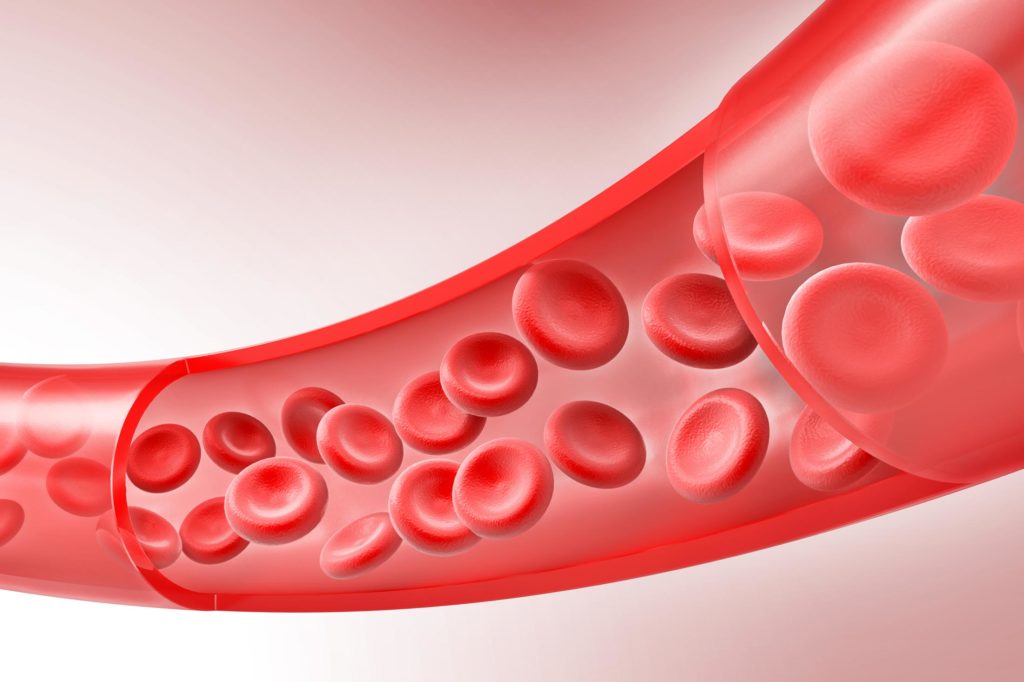
Most people recognize varicose veins because of their appearance. Telltale signs of varicose veins are large and swollen veins, often visible under the skin. They are red or blue in color and typically appear in the legs. While varicose veins are unsightly or embarrassing for patients, they are also extremely painful. Traditional treatments for varicose veins help patients manage the day to day symptoms and pain, but there are new cutting-edge treatments available that allow patients to live a pain-free life.
Varicose veins are caused when one-way valves located in veins do not function properly. Normal functioning valves block blood from flowing back toward the heart. Valves that do not function properly allow blood to leak and blood backs up in the leg causing swelling. This swelling is extremely painful as it stretches as the vein stretches to accommodate the backup of blood.
Typical symptoms of varicose veins include intense throbbing, a feeling of heaviness, aching or itching in the legs and at times swelling in feet and ankles. Severe symptoms include acute pain after standing or sitting, changes in skin color, dry skin patches and the development of painful sores or skin ulcers on the legs or feet. Blood clots are also a dangerous result of varicose veins that cause life-threatening situations.
The risk of developing varicose veins increases with age, and typically women more women are diagnosed with varicose veins as a side effect of hormonal changes throughout the life cycle. Being overweight or obese also increases the chance of developing varicose veins. Genetics and leading a sedentary lifestyle also contribute to a varicose vein diagnosis.
After being diagnosed with varicose veins, patients will likely receive a care plan from their physician that includes self-care options for treatment. Most varicose vein treatment plans include uses compression socks to decrease swelling and keep blood moving in the right direction. Compression socks may be worn intermittently or for extended periods of time depending on the severity of swelling. Patients are also encouraged to increase physical activity when possible, and avoid sitting or standing for long periods. Patients that have developed skin sores or ulcers should receive directions for caring for their wounds to prevent or treat infections.
Even with these treatments, varicose veins worsen over time. Additional therapies such as laser ablation, sclerotherapy, and micro phlebectomy treat varicose veins and quickly eliminate pain. These treatments are nonsurgical and allow patients to return to return to normal activity quickly. Dr. Michael Budler, M.D., offers these therapies, as well as thermal coagulation, to allow patients to live a pain-free life. “Laser ablation and other therapies allow patients to experience immediate relief from varicose vein pain,” says Budler.
Laser ablation therapy is a minimally invasive treatment offered by Budler at his Advanced Radiology practice in Grand Island, Nebraska. During laser ablation, physicians insert a laser probe through a small incision in the vein. This probe transmits laser energy into the vein and seals the vein shut, rerouting the blood to other healthier veins. Ablation therapy is over 99 percent effective for varicose vein sufferers and recovery is minimal.
Microphlebectomy is another minimally invasive procedure to treat varicose veins and eliminate varicose vein pain. Microphlebectomy involves the removal of the damaged vein through small incisions. Patients stay awake during the procedure and patients are able to quickly return to normal activity.
Small varicose veins, often called spider veins, are treated with nonsurgical options such as sclerotherapy. Sclerotherapy involves the injection of a solution into the affected veins, causing their collapse. Blood is then redirected to healthier veins. Recovery from sclerotherapy is approximately one month.
Spider veins and veins that are close to the skin’s surface are treated with thermal coagulation. This procedure uses a probe inserted through a small incision to heat up the damaged vein, causing its eventual collapse. Like other procedures, this collapse causes normal blood flow to resume as blood is being rerouted to healthy vessels.
